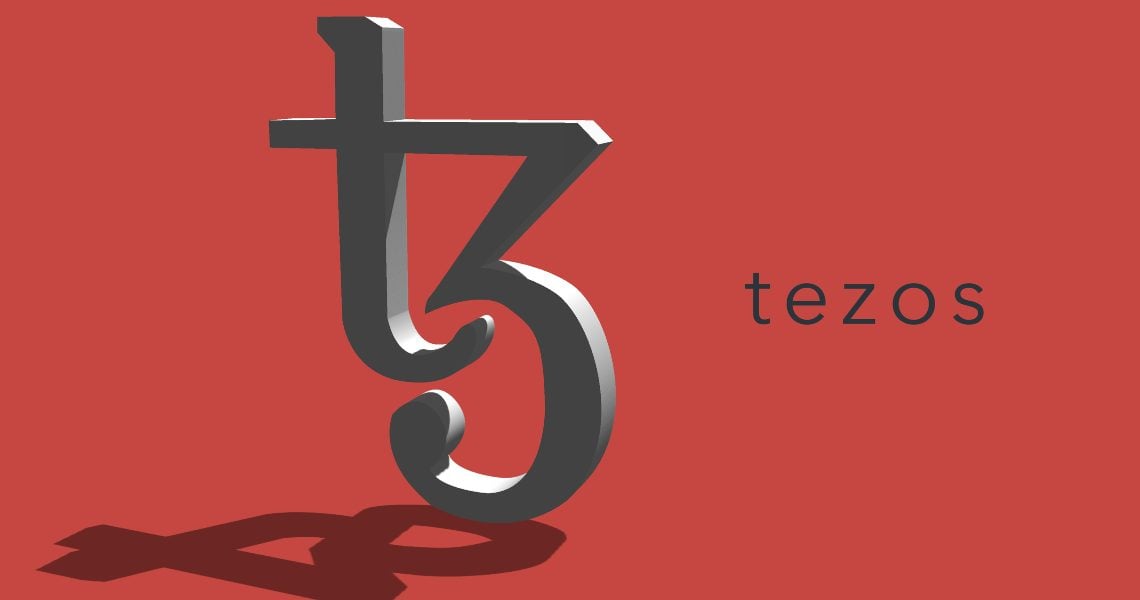
In this article we explore the topic of Smart Rollups on Tezos, one of the most interesting emerging technologies in the blockchain landscape.
For this project, originally developed as a monolithic L1 network, everything changed with the launch of Tezos X which made the blockchain super scalable.
Now the Smart Rollup, increasing the processing capacity of the network and moving calculations off-chain, create favorable conditions for the development of the web3 ecosystem
The developers are ready to embrace an interoperable, fast, and secure cryptographic infrastructure, ideal for both public and private deployments.
Let’s see all the details below.
Tezos X: the transition from monolithic to modular network
Before delving into the topic of Smart Rollup, we must necessarily introduce the neo architettura Tezos X, which has enabled the birth of this impactful technology.
In 2014, at the dawn of Tezos development, the project aimed to build a blockchain resilient to censorship, with a purely monolithic execution layer.
As the years went by, however, the cryptographic network team rethought their on-chain architecture, seeking to move towards a modular execution environment.
This means moving from a system where each node replicates all network activity, to another where each node must essentially perform only one specific task.
This type of approach is justified by the desire to achieve a high transaction throughput, which is difficult to obtain through the computing power.
The modular design therefore allows for greater scalability and to take advantage of all the benefits offered by the vast blockchain world.
In addition to speed, however, the new Tezos X network must be able to integrate all its components under the key principles of composability and interoperability in order to function.
It must develop a unified ecosystem of functioning applications and be able to connect with external environments that leverage different frameworks.
The smart Rollup are at the center of the innovative vision of Tezos
Source: https://spotlight.tezos.com/tezos-x/index.html
The arrival of Smart Rollup optimistic on the Tezos blockchain
Smart Rollup are nothing more than second-level scaling solutions, which operate starting from the security of the layer-1 Tezos.
They are secondary networks that allow for a significant increase in the processing capacity of advanced transactions on the chain.
They take their name from the rollups of Ethereum, which aggregate transactions in batch by performing the off-chain computation and increasing the availability of blockspace.
Their task is to move the calculation work from L1 to a dedicated infrastructure, greatly reducing the cost of transaction verification.
The Smart Rollup therefore contribute to improving the Tezos ecosystem, making it more economical and consequently more attractive to users and developers.
Think that precisely thanks to this technology, the Tezos team has reached 1 million “theoretical” transactions per second (TP/S) on their network.
.@tezos , a renowned blockchain, introduces “Smart Rollups” to enhance scalability and efficiency.
Here are the key points for what’s being touted as a game-changer for scalable and efficient blockchain solutions.
Smart Rollups are an L2 scaling solution for @Tezos that… pic.twitter.com/OTxDBwBm5B
— Zeeve RaaS (@0xZeeve) August 21, 2024
Generally, Ethereum rollups are distinguished into optimistic and zero knowledge: those of Tezos are optimistic rollups.
It means that the calculations performed by these infrastructures are considered valid if they are not disputed within a certain period (about 14 days).
The term optimistic derives from the fact that it is assumed that in these the off-chain transactions are valid and do not need to publish the validity proofs for each batch of transactions
The users themselves are responsible for verifying whether the commitments of the Smar Rollup are valid or not, and they must publish a fraud proof to contest them.
If the fraud is confirmed, the challenger receives a reward and the fraudulent party loses the tokens previously staked.
In other words, all transactions are valid by default unless proven otherwise. Only one honest node is needed to ensure the validity of the state of an optimistic rollup.
First-class public or private “sanciti” Smart Rollup
The smart Rollup di Tezos sono considerati come agenti “sanciti” del network, ossia cittadini di prima classe integrati perfettamente con il protocollo. Fanno parte in modo nativo del “Consensus Layer” di Tezos
This also means that the Tezos L1 can provide a common and open infrastructure for all rollups, such as the message inbox and the logic for the refutation games.
This composability factor allows developers to implement and execute Smart Rollups in record time. It is a significant advantage as it also ensures the security of the main layer.
It is a much simpler and safer approach than recreating the entire infrastructure every time with smart contracts. The governance of these L2 networks is once again entrusted to the community vote.
2/9) What makes these roll-ups “enshrined” is that they are a native part of XTZs consensus layer
This means no admin keys, no weird token economics, no permissioned elements & no KYC
While being perfectly interoperable & composable, solving the UX problem that has plagued L2s
— Justin Bons (@Justin_Bons) March 30, 2023
It is also interesting to note that Smart Rollups can be public or private.
Public rollups are permissionless, which means that anyone can be an operator and help verify the security of the rollup state.
Private ones, on the other hand, are permissioned, meaning that the creator can limit the number of operators who can verify the network.
This function is useful when it becomes extremely crucial to protect the state of the Rollup. Any user who decides to create a rollup on Tezos can decide with what characteristics to launch the infrastructure based on their own needs
It is also possible to start from a private rollup and make it public afterwards, but not vice versa.
several new rollups are coming to the #Tezos ecosystem
from existing ones like smart rollups and @etherlink to upcoming ones in #Tezos X, such as canonical and now JavaScript
we can easily get confused by what all these are doing
let’s break it down
— William McKenzie (@wbm_97) August 28, 2024
Finally, we remind you that a few months ago Tezos introduced the Data Availability Layer for its mainnet. It is a mechanism that facilitates the publication of rollup data on layer-1, supported by the wide range of nodes already in operation.
The scalability solutions Etherlink and Jstz supported by Tezos
.
Among the most well-known Smart Rollup built on Tezos, we find Etherlink and Jstz.
The first represents a layer-2 EVM compatible that relies on the security of the main Tezos network.
Introduced on the mainnet at the end of June, this rollup has not managed to attract much capital to itself, so much so that to date it has a TVL of only 178 thousand dollars.
Compared to other rollups in the Ethereum ecosystem, it is much less popular and widespread, with only 2 dapp operating on it.
Despite this, it remains one of the most advanced technologies in the Tezos ecosystem, so much so that it could potentially support the scalability and demand of blockscape if needed.
We will see if in the coming months there will be greater participation from users and developers.
Source: https://defillama.com/chain/Etherlink
Instead, the Smart Rollup Jstz (pronounced “justice”) represents another scalability solution, but mainly aimed at solving the fragmentation problem.
In addition to offering a vast transaction throughput, Jsx focuses on the interoperability of the vast blockchain world and on the concept of efficiency of liquidity.
Thanks to its Javascript programming language, the most famous and widespread in the world, it aims to host the next wave of FOMO in the development of web3 applications.
Additionally, its smart contracts are designed to interact with different programming languages, significantly improving the web3 development experience.
Other interesting features include account abstraction and off-chain communication functions. At the moment this Tezos rollup is still in development.
with “Jstz” being developed, #Tezos is becoming a highly accessible network for developers and that’s whole idea with #Tezos X
in our TezTalk with @beatkalipska, she makes an analogy of creating a playground, so to speak, for developershttps://t.co/AZ4ggvSRbA
— William McKenzie (@wbm_97) August 28, 2024






















